�
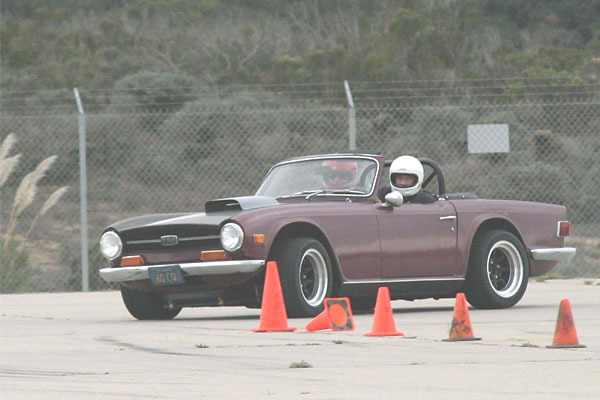 �
�
Jim Prettyleaf's 1971 Triumph TR-6 with Buick 231 V6
��
as published in BritishV8 Magazine, Volume XVI Issue 2, October 2008�
�
Owners: Jim Prettyleaf
�
City: Cupertino, CA
�
�
Model: 1971 Triumph TR-6
�
Engine: Buick 231 V6
�
Conversion performed by: owner�
| Engine: | �1984 Buick 231cid (3.8L) V6 with 10:1 compression. Edelbrock Performer �
intake manifold. Holley 390cfm four barrel carburetor. MSD ball bearing �
distributor with MSD 6AL spark box. Kenne Bell "Mark 2X" camshaft �
(intake: 0.478" lift / 270 duration, exhaust: 0.494" lift / 280 duration.) �
Roller rockers (1.6:1). | �
| Exhaust: | �custom 3-into-1 headers fabricated by San Francisco Muffler. | �
| Cooling: | �custom radiator, built using stock TR-6 top and bottom tanks with �
enlarged inlets/outlets and a 3-row replacement core. Electric (pusher) fan. | �
| Transmission: | �Muncie M21 4-speed, with 1:1 top gear. Lightweight billet steel flywheel �
with 10.4" Centerforce clutch and hydraulic throw-out bearing. Custom �
driveshaft and halfshafts fabricated by San Jose Drive Line. | �
| Rear axle: | �Chevrolet Corvette C3 differential with limited slip differential and �
3:54:1 final drive ratio. | �
| Suspension: | �(front) modified TR-6 with 6 degrees of castor and 3 degress �
of negative camber, utilizing "Uncle Jack Drews" spindles. �
(rear) Custom 3-link independent rear suspension with bespoke halfshafts �
and Summers Brothers stub axles. | �
| Chassis: | �added triangulation at the front and rear of the TR-6 frame, plus �
chassis brace with integrated roll bar. The body is mounted solidly �
to the frame with aluminum spacers to provide additional longitudinal �
bracing. | �
| Brakes: | �high coefficient rear brake linings with 0.87" diameter rear wheel �
cylinders from Sunbeam Alpine/Tiger and Wilwood brake bias valve to �
adjust front-to-rear balance. | �
| Wheels/Tires: | �Carroll Shelby 15x8.5 8-spoke wheels. Hoosier A6 225/45ZR15 autocross tires. | �
| Weight: | �2426 pounds. | �
| Interior: | �Auto Meter Sport Comp "Monster" tachometer with stock 1971 TR-6 white on �
black gauges. | �
| Comments: | �this car has been rebuilt three times now. The first version used an �
odd-fire 225cid Buick V6 - it was completed in 1977; This third version,�
featuring the even-fire 231cid V6 was completed in 2003 and has been driven �
about 6000 miles as of June 2008. This car isn't as quick in a straight �
line as some of the V8 conversions, but it turns and sticks hard enough to �
induce nose bleeds! | �
�
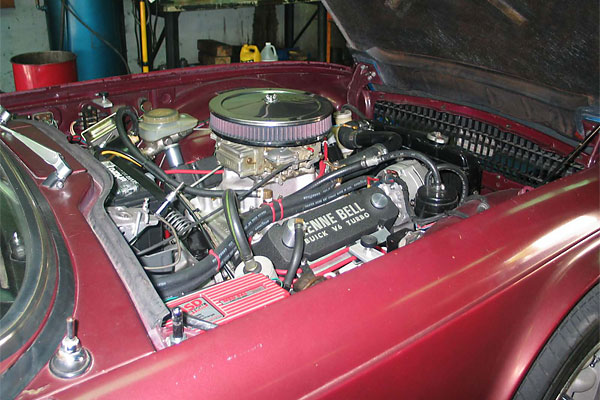
�
Normally aspirated Buick 3.8L V6 with 10.1:1 compression...
�
�
TR-6 frames are much too flexible, and the stock independent rear suspension �
has weak stub axles that can be broken by souped up versions of the original �
2.5 Liter inline six. Dead stock 2.5 Liter engines routinely break the right �
front and the left rear frame mounts for the stock differential. When swapping �
to a different engine that supplies more power and torque the stock independent �
suspension will require substantial upgrades and the differential mounts must �
be reinforced. The other option is to convert the car to a much stronger live �
axle, but this is also problematical since modern autocross tires provide more �
grip with negative camber set somewhere in the -2 to -3 degree range.�
�
To put more power in the TR-6 the stiffness of the chassis should be �
substantially improved or torque steer will quickly become objectionable. �
Revision one of my Buick V6 powered car made about 160 horsepower but with �
no chassis stiffener the car wanted to jump to the right about half of a �
lane when shifting from first to second at full power. The revision three �
car uses a nicely hotted up 231 cubic inch (3.8L) engine that is pumping �
out about 300 horsepower at the crank but the chassis stiffener keeps the �
car moving straight ahead during every upshift.�
�
The custom made half shafts and the Summers Brothers stub axles are �
strong enough to transmit 400+ horsepower. The Corvette differential is �
mounted to lightweight cellular steel mounts that can stand up the driveline �
torque and the rear wheel reaction torque in low gear. The front and rear �
cross members for the differential mountings are connected by triangulated �
steel tubes that are welded in place to transfer forces directly into the �
remainder of the chassis stiffener and roll bar assembly. The differential �
is attached to the cross members by four captive rubber mounts that were �
also burrowed from the C3 Corvette.�
�
Enjoying this article? Our magazine is funded through the generous support of readers like you!
�
To contribute to our operating budget, please click here and follow the instructions.
�
(Suggested contribution is twenty bucks per year. Feel free to give more!)�
�
The homemade independent rear suspension (IRS) has a single leading �
link that connects to the TR-6 chassis via a spherical bearing tie rod end. �
The thrust loads from the spherical bearing are distributed to the four �
mounting holes for the stock semi-trailing arm by a lightweight triangulated �
bracket. The back end of the trailing arm has a mounting flange that mates �
to the original TR-6 rear wheel bearing carriers. The half shafts have no �
slip-splines, so the upper transverse link of the short-long-arm IRS is �
the rotating half shaft. This is the same rear suspension scheme as used �
by the C3 Corvette so the differential bearings and housing were designed �
to cope with the lateral suspension loads. The lower transverse link of �
the short-long-arm suspension is a structural steel tube with left-hand and �
right-handed threads and spherical rod ends. The longer lower link connects �
to a short lightweight triangulated arm that projects downward from the �
mounting flange for the bearing carrier / leading link assembly. The leading �
link / rear suspension upright assembly is a mild steel weldment with a �
finished weight that is less than the original Triumph aluminum alloy �
semi-trailing arm. The steel mount that attaches the lower transverse �
links to the case of the Corvette differential also provides an attachment �
point for a Panhard rod that connects to the right hand frame rail of the �
TR-6 frame. Rear wheel reaction torque and driveshaft reaction torques are �
absorbed by the four rubber mounts at the top of the differential, but the �
lateral motion of the differential is tightly constrained by the panhard rod �
so that the rear suspension geometry remains very stable when lateral loads �
are applied in the turns.�
�
When the revision three car is driven into a turn too fast and the driver �
feathers off the power the homemade three and one half link IRS gathers up �
much quicker than the original Triumph semi-trailing arm IRS. The homemade �
IRS also has less camber change from bump to rebound than the stock semi-trailing �
arm suspension, so the car is much more tolerant of uneven pavement and �
applications of engine torque.�
�
The generation three Triuick is a blast to drive! The Buick V6 is a very �
light relatively large swept volume engine, without the driver this car has a �
measured weight distribution of 48% front 52% rear. This car provides the best �
tactile feedback to the driver's fingertips of anything I have ever driven and �
that is saying something since I started driving sprint go-karts before I was �
old enough to have my first driver's license. I am still fine tuning the �
chassis settings but a recent change that reduced the rear camber from -2.5 �
degrees to -2.0 degrees gave an impressive improvement in the rear grip.�
�
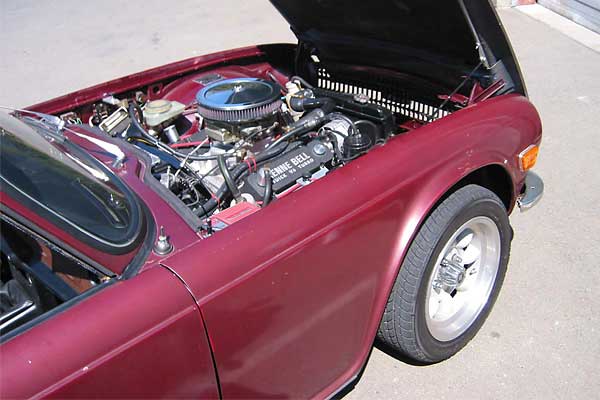
�
Holley 390cfm four barrel carburetor on an Edelbrock Performer manifold.
�
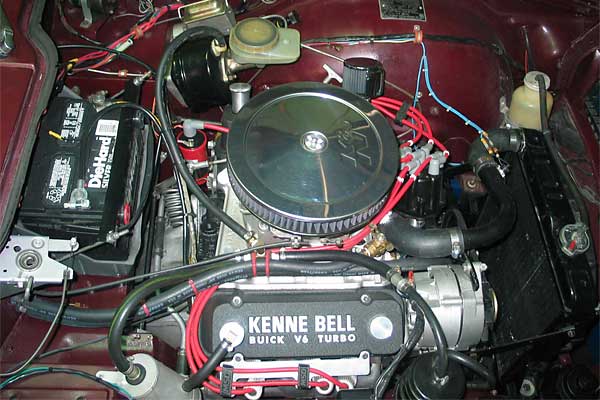
�
Tall valve covers are needed to clear roller rockers and high cam lift. (The car doesn't have a turbo.)
�
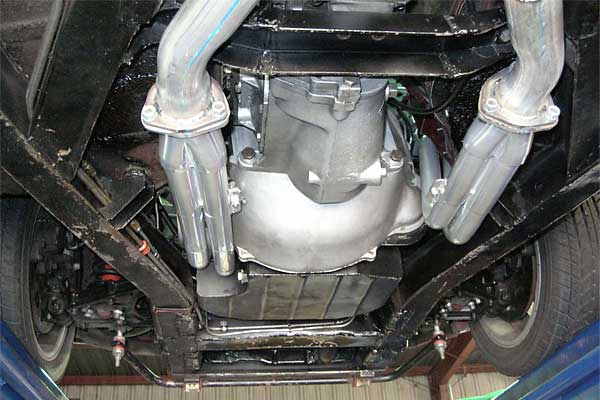
�
Headers, trap-door oil pan, and Muncie M21 close-ratio four speed transmission.
�
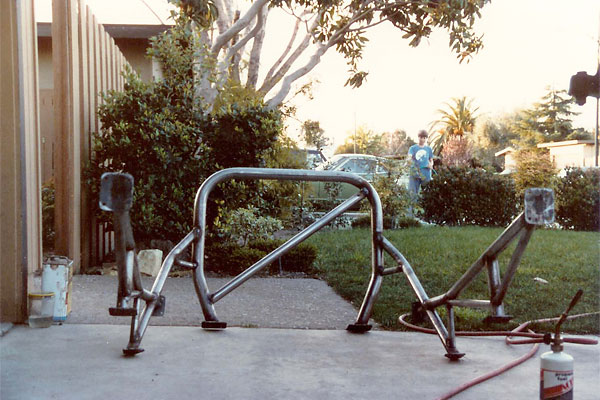
�
The chassis stiffener and roll hoop weigh 45 pounds total.
�
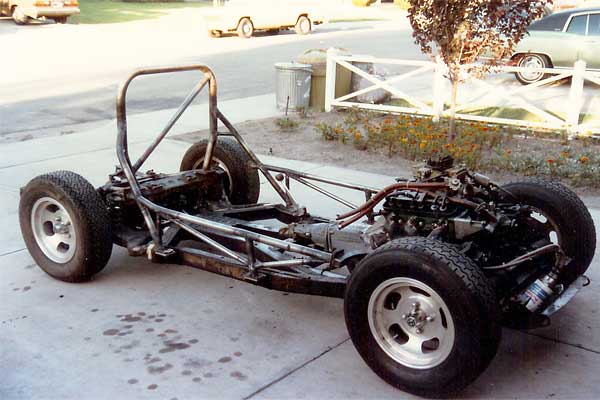
�
Integration of chassis stiffener and TR-6 chassis.
�
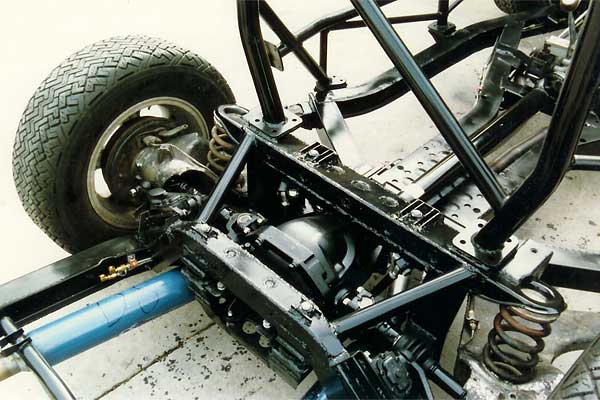
�
Beefed up differential mounts and rear crossmember braces.
�
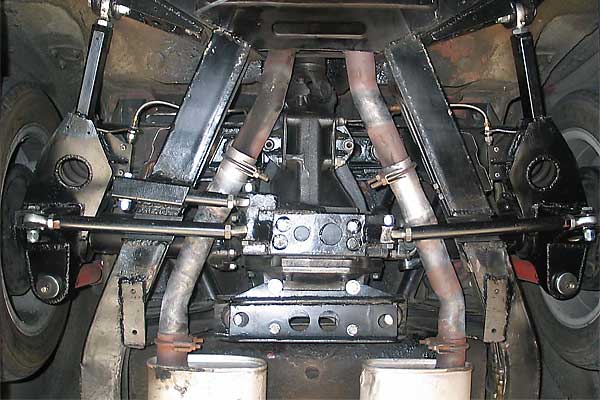
�
New three-link independent rear suspension.
�
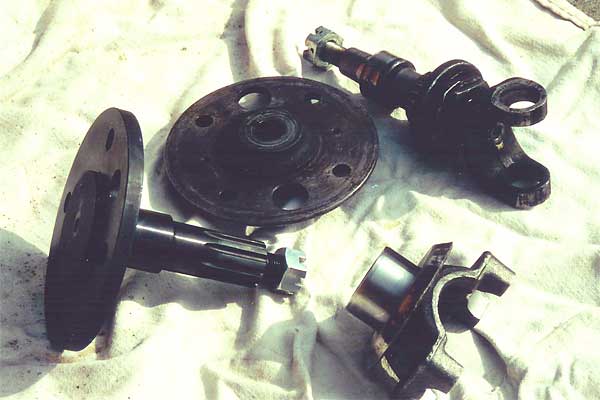
�
Comparing the Summers Brothers stub axle (left) with the old TR-6 stub axle and flange (top right and center).
�
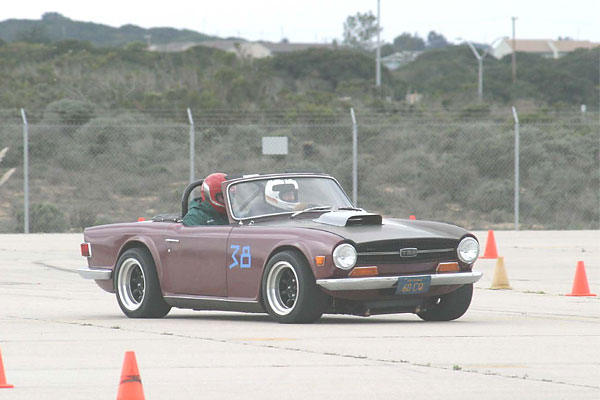
�
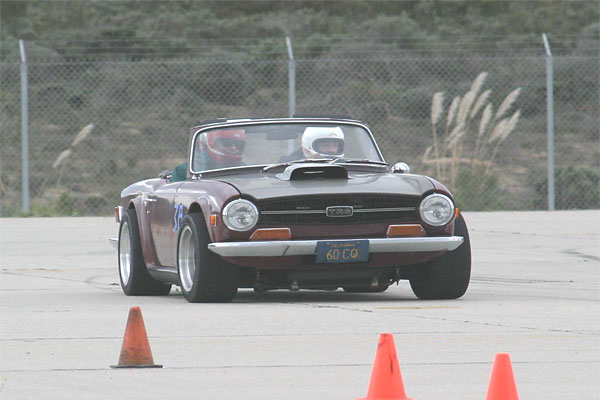
�

